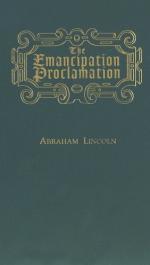|
This section contains 6,961 words (approx. 24 pages at 300 words per page) |

|
January 1, 1863, was a day of joy for African Americans. On that day, President Abraham Lincoln (1809–1865; served 1861–65) signed the Emancipation Proclamation. The proclamation declared that most of the four million black people who had, beginning in the seventeenth century, been enslaved in the Southern United States were forever free. The Civil War (1861–65) had raged for two years by then, pitting the Northern defenders of the Union against the Southern members of the Confederacy (the name for the states that had separated themselves from the United States to form their own country) in a bloody conflict.
At first, the war had seemed to be more about the rights of individual states than about freeing the slaves, but President Lincoln's Emancipation Proclamation had changed the focus of the struggle. From that day on, the Civil...
|
This section contains 6,961 words (approx. 24 pages at 300 words per page) |

|


